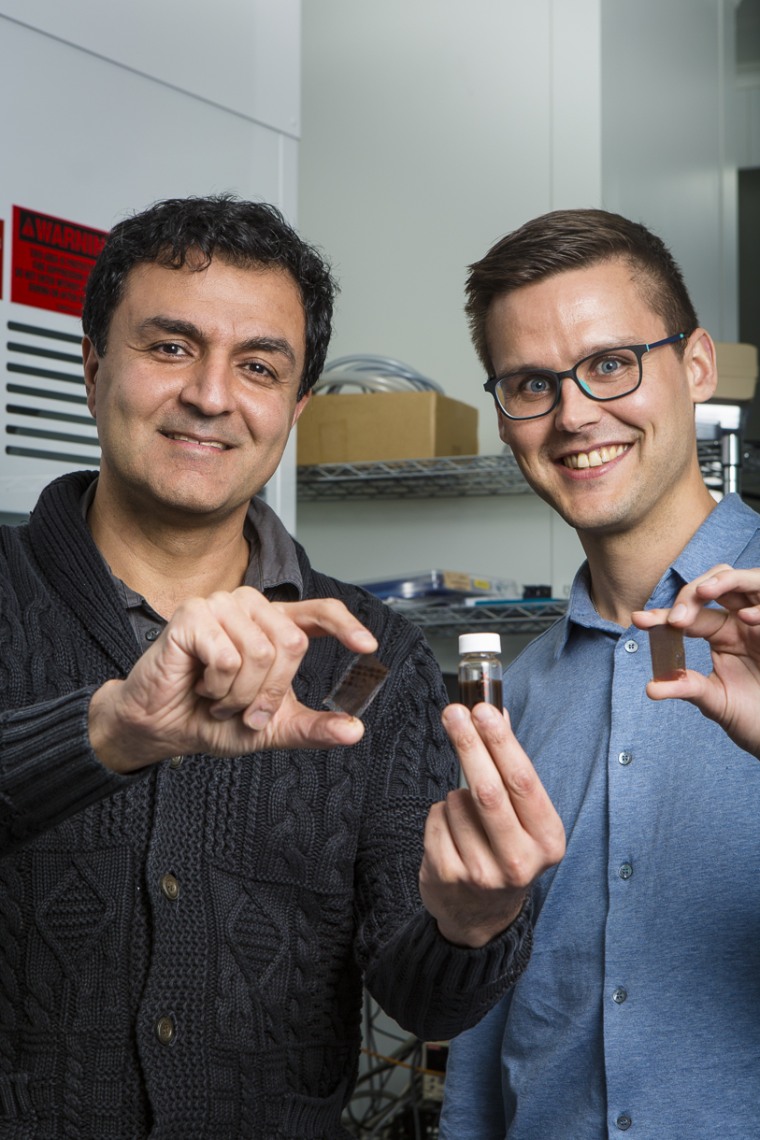In a few short years, house paint might be able to do more than simply brighten your walls. A team of researchers in Australia have created an experimental paint that attracts water molecules from the air and chops them up to produce hydrogen, a clean-burning fuel that can be used to generate electricity.
“Our new development has a big range of advantages,” Dr. Torben Daeneke, a research fellow at Royal Melbourne Institute of Technology School of Engineering in Melbourne and leader of the team, said in a written statement. “There’s no need for clean or filtered water to feed the system. Any place that has water vapor in the air, even remote areas far from water, can produce fuel.”
Any place that has water vapor in the air, even remote areas far from water, can produce fuel.
Dr. Torben Daeneke, research fellow at RMIT
If the technology is perfected and the paint can be made commercially available, it could find widespread application in sunny places. It would generate only a fraction of the power generated by conventional solar panels, Daeneke told NBC News MACH in an email, but it could supplement panels on homes and other buildings. The paint could be used on walls and other surfaces where it’s not feasible to use solar panels.
The paint contains titanium dioxide, a common white pigment known for its ability to absorb sunlight, and molybdenum disulfide. The latter compound uses the solar energy supplied by the titanium dioxide to pull water molecules from the air and split them into its hydrogen and oxygen constituents.

The oxygen liberated by the process is simply released back into the air. And currently, the hydrogen too is released into the air. But the researchers are working to develop piping or other means of collecting the hydrogen so that later it could be used to power an engine or fuel cell.
That sounds like a winning proposition. But not everyone is convinced.
“The idea of painting walls and getting hydrogen is rather intriguing but not easy to realize,” Dr. Matteo Cargnello, a Stanford University professor whose research focuses on similar uses of solar energy, told MACH in an email. “One of the main issues in utilizing hydrogen is in its capture and storage in addition to its production, which would be really hard to realize with such a concept unless carefully engineered.”
To be a viable energy source, Cargnello said, the hydrogen would not only need to be collected but also compressed and stored. And if the hydrogen and oxygen were to mix, the result could be an explosion like the one that destroyed the Hindenburg airship in 1937.
But Cargnello commended the research as part of ongoing efforts to find ways to wean energy consumers off fossil fuels and on to clean-burning hydrogen.
“There is no "one-size-fits-all" solution,” Cargnello said. “We need to keep working on several concepts, and it's very likely that the sustainable future will see the combined used of multiple strategies.”
A paper describing the solar paint was published June 14, 2017 in the journal ACS Nano.
